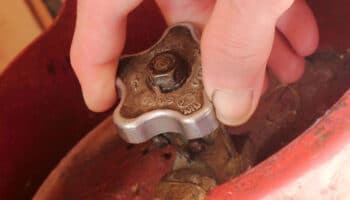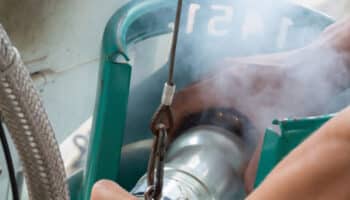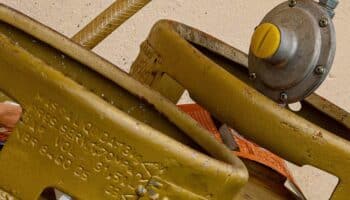We've independently reviewed this article to make sure it's as accurate as we can make it.
To find out more about our article creation and review process, check out our editorial guidelines.
Is your carpet wet from underneath?
That sucks! I know how annoying it can be to have random wet spots on your carpet, especially when you have no idea why it’s happening.
Don’t worry, though. I’m here to help.
If your carpet is wet in places, there was probably an accidental spill, you have a foundation leak, a poor gutter system, or a roof leak. To solve the issue, you must address the leak and use towels and fans to dry the carpet.
Ready to keep your carpet from getting wet in random places? Let’s dive in!
Random Wet Spots On Carpet? 4 Reasons Why (With Fixes)
In this section, I’ll guide you through the different reasons that can explain why your carpets are damp and provide various solutions so you can forget all about the problem.
#1 Accidental Spills
From what I’ve seen, accidental spills are one of the most common reasons for random wet spots on carpets.
You see, if water, cleaning solutions, or other fluids are accidentally spilled on the carpet, they can easily seep through the padding and cause a wet spot.
The extent of wetness will depend on the amount of spilled liquid. You’ll need to clean the spot and absorb the liquid with towels immediately to prevent mold growth and other issues.
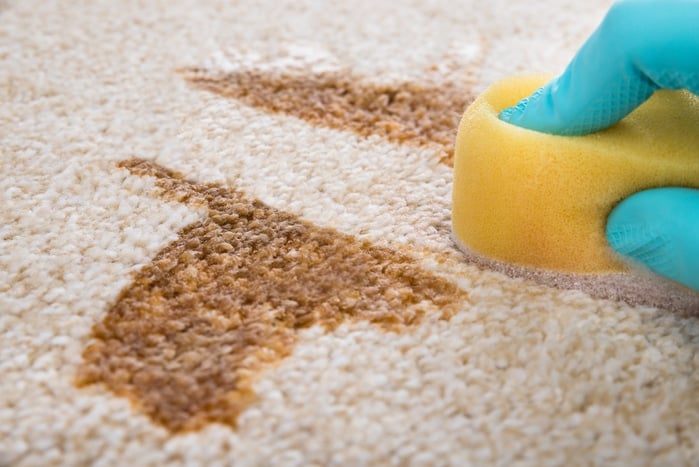
Keep in mind that dogs or cats can also have accidents on the carpet, which can lead to random wet spots.
However, if your carpet is not wet due to an accident, chances are you have a leak. Read on to learn how to fix leaks around the house.
#2 Foundation Leak
Is your carpet getting wet from underneath? Then you probably have a foundation leak.
A foundation leak occurs when the concrete underneath your home has a crack, also called “a slab leak”. Please note that not every house is built on a slab, but even houses with crawl spaces can have a leak.
So, if you notice a crack in your concrete, the water can seep into your foundation and cause a wet spot.
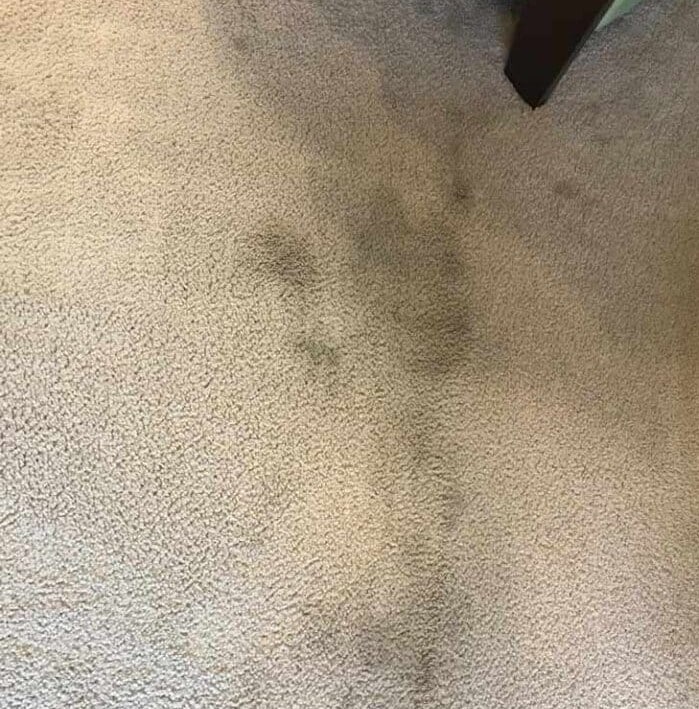
Another clear indicator that you have a foundation leak is mold. Mold can easily grow in damp, dark environments and scatter throughout your house. You can also notice a significant spike in your water bill or low water pressure.
So, if you suspect a foundation leak, you must immediately turn off the water supply. The valve is typically located in the basement or crawlspace, near the water heater or washer, under the kitchen sink, next to the water meter, or in your garage.
In the US, there will always be a water meter somewhere in the yard, sidewalk, or street marked “water meter” unless the home has a well. You can use a tool like this one to turn the water off at the meter.
Then, you’ll need to call a professional plumber so they can fix the foundation leak.
As the plumber works on your house, please dry your carpet to prevent mold. You can use a few fans, dehumidifiers, and towels. However, keep in mind that if your carpet is very wet, you’ll need to replace it with a new one.
#3 Poor Gutter System
If your carpets are damp only after it rains, water is likely falling off the side of your house and seeping through the walls due to a poor gutter system.
The best way to deal with the problem is to contact a professional. Of course, you must install gutters on the side of your house. At the same time, you still need to dry out the water that has already gotten inside your home.
As mentioned above, I recommend using fans, towels, a wet vacuum, or a dehumidifier to dry your carpets.
#4 Roof Leak
If there are random wet spots on the carpets of the second floor of your home, chances are you have a roof leak.
If your roof is over 25 years old, it can leak because the materials can deteriorate over time.
A roof leak can cause significant damage to your home, so it’s important to address the issue as quickly as possible. You’ll need to call a roofing contractor who can closely examine your roof.
At the same time, you will also need to absorb the water in your carpet using any of the tools mentioned above.
Tip: If you don’t have a fan, you can rent one. Many home improvement and tool rental stores offer this service. However, for a small area of wet carpet, you can use a hairdryer on the cool setting.
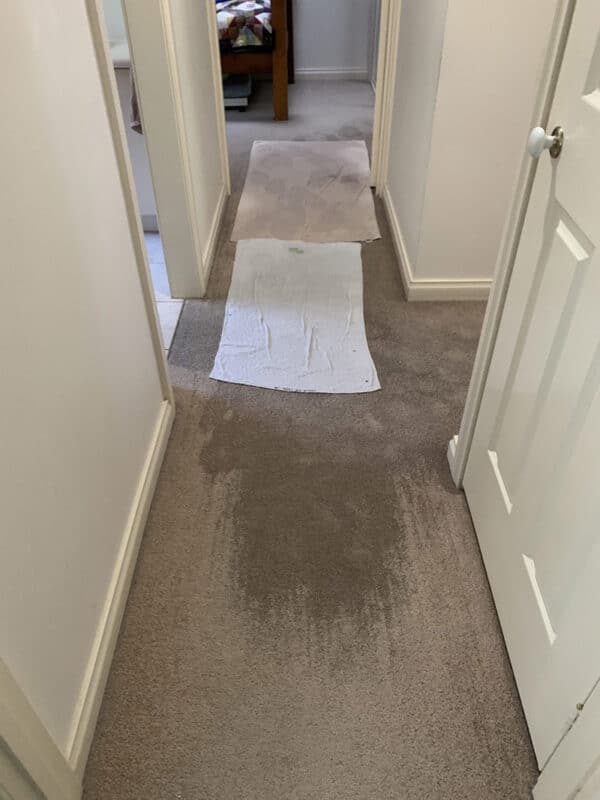
Not drying your carpet immediately can lead to serious complications. If left untreated, mold and mildew can begin to grow, presenting health risks.
Wet carpets can also develop a musty smell. So, please ensure you dry any wet spots as soon as you notice them.
If you already have mold in your home, please call a mold remediation professional who can help you.
Summing Up: Your Guide to a Dry, Spotless Carpet
Hopefully, now you know how to fix a carpet with random wet spots.
Remember that accidental spills, a foundation leak, a poor gutter system, and a roof leak can cause wet spots. If you ignore the problem, it is only going to get worse. Therefore, call a professional as quickly as possible.
Don’t forget to dry your carpets with towels, fans, dehumidifiers, hairdryers (in the cool setting), or a wet vacuum.
Thank you so much for reading! Please check out our other posts below if you found this article helpful.
Have a great day.






